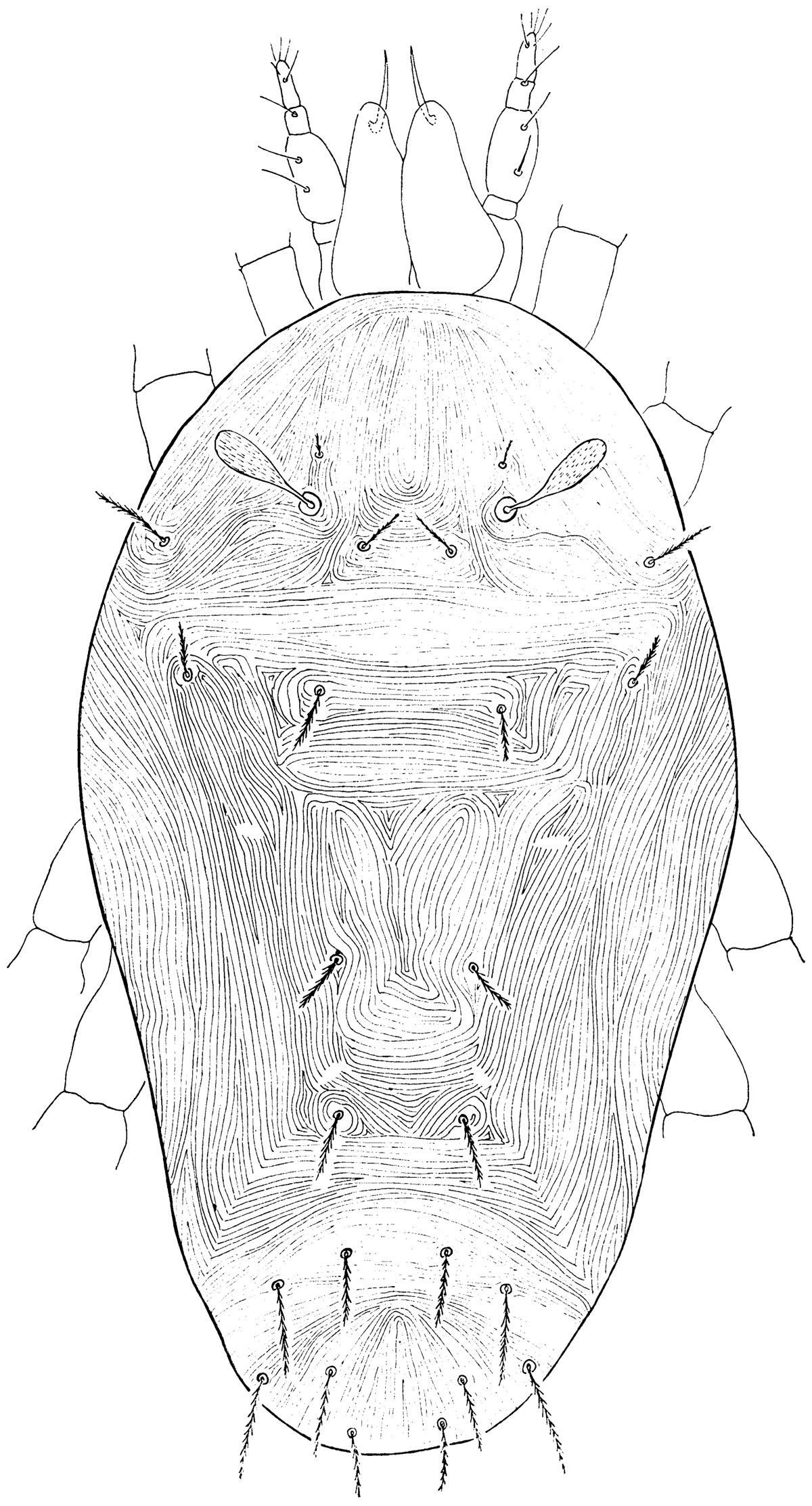Bee Mites : Acari : Acariformes : Trombidiformes
Family Tydeidae Kramer, 1877
Type genus Tydeus Koch, 1835
Material (show database records).
General Description. This large cosmopolitan family includes mites that have been mostly recorded as predators but also as plant and fungus feeders or scavengers. Probably many species are unspecialized feeders. Tydeidae live in soil, humus, litter, moss, lichens, fungi, grass, on trees (in bark, on leaves and fruits), straw and hay, in stored products, and nests of birds, mammals, and stingless bees (Meliponini). Several species are of medical, veterinary, and agricultural importance. Tydeus molestus Moniez, 1889 has been recorded as causing itching and irritation of the skin of man and domestic animals.Tydeus interruptus Thor, 1932 was found in hay from Icelandic sheep pastures, and together with other mite species may represent a self-sustaining reservoir for scrapie-like agents. Tydeus californicus (Banks, 1904) and Lorryia formosa Cooreman, 1958 have been observed to cause damage to citrus. However, the last species is considered to be beneficial as it feeds on various fungi in citrus groves. (Kazmierski, 1998a; Krantz, 1978).
André (1980a, 1980b) listed 42 genera of the family, while Zhang at al., 2011 - 30 genera and 340 species. Kazmierski (1998a) gives a key to 21 genera and 254 species of the subfamily Tydeinae.
Many species of this family are known in associations with bees, although the exact nature of mite-bee interactions is unknown in these cases, but one species was speculated to be a beneficial fungus feeder in the host's nest. Two genera, Melissotydeus André and Proctotydaeus Berlese, were recorded from nests of stingless bees in Brazil. Unidentified species of Paralorryia and Pronematus were collected from beehives in Iran and the Philippines, respectively (Mosaddegh, 1997; Malabanan and Corpuz-Raros, 1988). Tydeus interruptus was found in bumblebee nests in New Zealand (Macfarlane, 2005), Tydeus xylocopae in the nest of a large carpenter bee in Indonesia (Oudemans, 1926), while unidentified species of Tydeus were repeatedly collected in beehives throughout the world (Chmielewski 1971, Haragsim et al. 1978, Homann 1933, Kamali et al. 2001, Malabanan and Corpuz-Raros 1998). Finally, a tydeid mite unassigned to a genus was recorded in beehives in Poland (Chmielewski, 1991; de Jong, 1982).
Genera associated with bees
- Melissotydeus André, 1985
- Paralorryia Baker, 1965
- Proctotydaeus Berlese, 1911
- Pronematus Canestrini, 1886
- Tydeidae gen. Chmielewski, 1991; de Jong, 1982
- Tydeus Koch, 1836
References
André, H. M. 1980a. A generic revision of the family Tydeidae (Acari: Actinedida) IV. Generic descriptions, keys and conclusions. Bulletin & Annales de la Societe Royale Belge d'Entomologie.116: 103-130.
André, H. M. 1980b. A generic revision of the family Tydeidae (Acari: Actinedida) IV. Generic descriptions, keys and conclusions (continued). Bulletin & Annales de la Societe Royale Belge d'Entomologie.116: 139-168.
Zhang, Z.-Q., Q.-H. Fan, V. Pesic, H. Smit, A. V. Bochkov, A. A. Khaustov, A. Baker, A. Wohltmann, T. Wen, J. W. Amrine, P. Beron, J. Lin, G. Gabrys & R. Husband. 2011. Order Trombidiformes Reuter, 1909 Zootaxa.3148: 129-138.
Image Gallery
B. OConnor and P. Klimov ©
Created: May 02, 2012
Last modified: 

